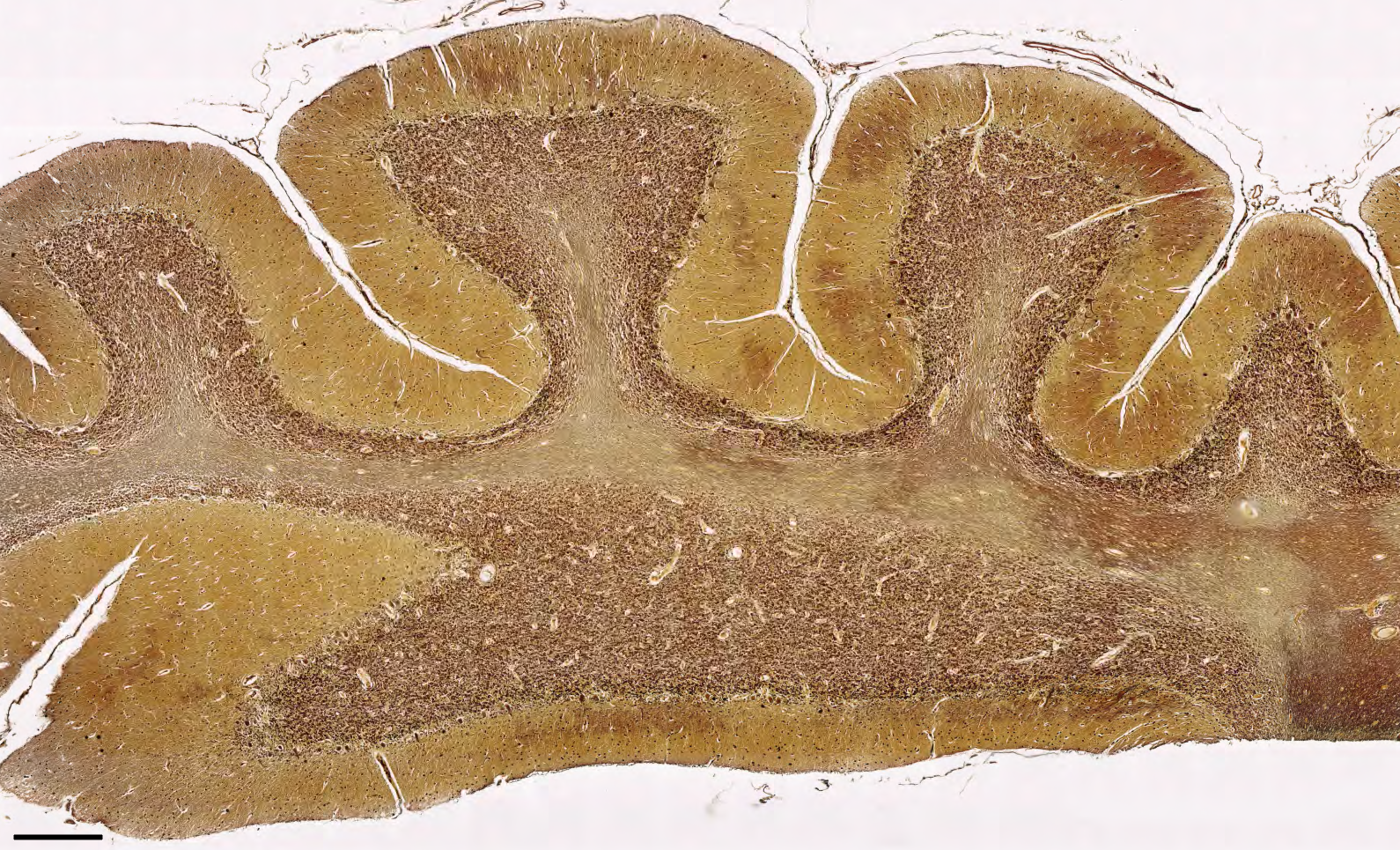
Humans Generate Most Cerebellar Granule Cells Postnatally
The human brain undergoes extraordinary development in utero, with major growth continuing throughout childhood, especially during the first year. Scientists know a lot about how the neurons and circuits of the human brain develop in infancy, but a lack of specific knowledge about key elements has left doctors mystified by certain childhood disorders like SIDS and autism.
Neuroscientists at Ludwig-Maximillians-University of Munich have made new revelations about the development of cerebellar granule neurons. The smallest and most numerous type of neuron in the human brain, these cells transmit motor and sensory information to Purkinje cells, large neurons that are said to play a role in coordinating motor movement and are the sole source of output for the cerebellar cortex.

Human cerebellum section with silver staining. Image from the Iowa Virtual Slidebox
The scientists found that humans generate most cerebellar granule cells after birth (85 percent), a finding that contradicts previous studies, which say the majority of these cells are generated prenatally.
Using Stereo Investigator, the researchers conducted a stereological study of the cerebella of 14 infants who died before their first birthday. They used Optical Fractionator probe to estimate the number of Purkinje and granule cells in cresyl violet stained sections of each brain. Performing a statistical analysis with the information they acquired, they determined that the number of granule cells per Purkinje cell in the human cerebellum increases with age during the first year of life. According to the paper, the population of granule cells grows from approximately 485 per Purkinje cell in the first month after birth to approximately 2,700 at month 11.
“The results of the present study indicate that damaging events during the first year of life may affect the cerebellum and, therefore, motor control, attention, emotions, mood and social behaviors much more severely than generally thought,” the authors say in their paper, adding that more new research should be carried out on postnatal neurogenesis in the human brain.
Kiessling, M., Büttner, A., Butti, C., Müller-Starck, J., Milz, S., Hof, P., Frank, H., Schmitz, C. (2013). Cerebellar granule cells are generated postnatally in humans. Brain Structure and Function, 1-16. doi: 10.1007/s00429-013-0565-z.


